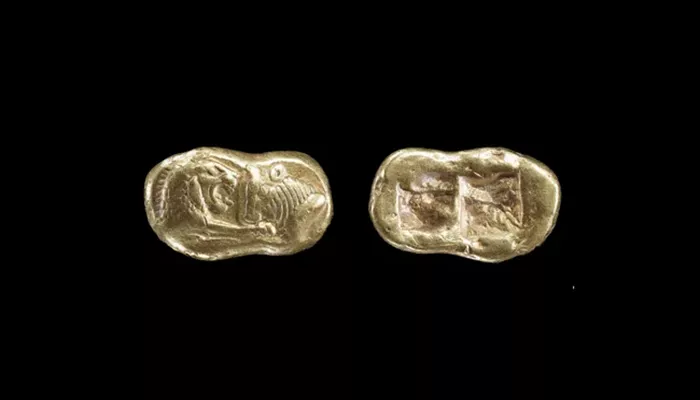Around 2,500 years ago, Croesus, the ruler of Lydia—an ancient kingdom in what is now western Turkey—introduced a revolutionary concept that would shape global economies for centuries. Reigning from 560 to 546 B.C., Croesus was already immensely wealthy due to his control over the rich gold deposits in the Pactolus River, known today as the Sart Çayı. His prosperity extended beyond resources, as he strengthened his kingdom’s power through strategic diplomatic and trade relations with Egypt, Greece, and Babylon.
A key factor in this success was his father, Alyattes, who had pioneered the use of coins around 650 B.C. While Alyattes used electrum—a natural alloy of gold and silver—his coins were prone to value fluctuations due to the varying ratios of the metals. This lack of consistency made trade more uncertain.
Croesus, determined to improve upon this system, separated the coins into two distinct denominations of gold and silver, eliminating the guesswork in their value. To achieve this, he established coinage workshops in Sardis, the capital of Lydia, where electrum was refined into pure gold and silver. The resulting coins, about the size of a modern dime and weighing 10.7 grams (roughly a third of an ounce), were standardized in weight and had a fixed exchange rate between the two metals. This innovation laid the foundation for the first two-metal monetary system and introduced the world’s earliest gold standard.
Both gold and silver coins, known as Croeseids, bore identical designs. On one side, the images of a lion and a bull were stamped, possibly reflecting a traditional Near Eastern motif or symbolizing the two metals. The reverse side of the gold staters featured two squares, while the silver coins had one square, marking the distinction between the two denominations.
Though Croesus lost his kingdom to Persia in 546 B.C. following the Siege of Sardis, his legacy endures. His wealth, epitomized by the phrase “as rich as Croesus,” has made him a symbol of immense prosperity throughout history.
Related topics:
- India Surpasses China in Gold Purchases, Buying 51% More in Three Months
- Gold Rates Skyrocket in Chennai on Diwali, 24K Gold Exceeds Rs. 81,000 Per 10 Grams
- Bitcoin Poised for a Surge Amid Gold’s Delivery Delays, Expert Claims


